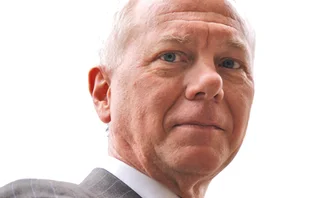
US banks require $74.6 billion in additional capital, stress tests reveal
Ten US banks collectively require an additional $74.6 billion in additional capital to insulate against possible losses over the next two years, the results of US government stress tests show.
Spearheaded by the US Federal Reserve, banking regulators presented firms with two different economic scenarios, a baseline economic scenario and a more adverse economic scenario. "By ensuring that these large [banks] have a capital buffer now that is robust to a range of economic outcomes, this exercise counters the risk that uncertainty itself exerts contractionary pressures on the banking system and the economy," the Fed said.
The baseline scenario assumes a 2% slide in real GDP in 2009, an 8.4% average civilian unemployment rate, and a US house price decline of 14%, as measured by the Case-Shiller 10-City Composite Index. By 2010, it predicts real GDP will rebound by 2.1%, civilian unemployment will rise to 8.8% and house prices will shrink by a further 4%.
The more adverse scenario - designed to mimic a deeper and longer recession than the baseline case - sees real GDP falling by 3.3% in 2009. Simultaneously, it assumes civilian unemployment will rise to 8.9% and house prices slump by 22%. By 2010, it sees real GDP recovering by 0.5%, civilian unemployment growing to 10.3% and house prices declining by another 7%.
As a temporary measure, US regulators are insisting banks have enough capital to maintain a minimum 6% Tier 1 capital ratio by the end of 2010 if the more adverse scenario occurs. At the same time, they are demanding banks hold a minimum 4% ratio of common equity to risk-weighted assets. This reflects the view of regulators that common equity grants banks a greater capacity to absorb losses through dividend cuts, for instance.
The tests reveal Bank of America has the largest capital shortfall, requiring a further $33.9 billion to shore up its capital buffer against a possible further deterioration in the economic climate. Wells Fargo requires a further $13.7 billion of capital, regulators believe.
The GMAC financial services arm of Detroit-based General Motors, which successfully registered as a bank in December 2008 to access funds under the Troubled Asset Relief Programme (Tarp), requires an additional $11.5 billion in capital. Meanwhile, Citigroup - which has already received substantial government support in the past year - needs to raise another $5.5 billion, the results show.
Further capital requirements among other banks are of a smaller magnitude. Regions Financial has to swell its capital by $2.5 billion, while SunTrust has to raise $2.2 billion. Fifth Third Bancorp needs another $1.1 billion, while KeyCorp and Morgan Stanley are both in need of a further $1.8 billion. PNC needs to bolster its capital cushion by $600 million.
None of the other nine banks examined - American Express, BB&T, Bank of New York Mellon, Capital One, Goldman Sachs, JP Morgan Chase, MetLife, State Street and US Bancorp - require additional capital.
The tests concluded that losses at the 19 firms could reach $600 billion by the end of 2010 if the direction of the US economy tracks the more adverse scenario. The vast bulk of these losses would result from typical lending portfolios, although $99.3 billion of the losses were attributable to a stress test on the trading exposures of the five major dealers included in the tests.
Nineteen banks with risk-weighted assets of $100 million or more were ordered to analyse their loan and securities portfolios, including off-balance sheet commitments and contingent liabilities, to determine expected losses under the two macroeconomic scenarios set by regulators. Firms were also asked to forecast the resources they would have to absorb losses over the period, including pre-provision net revenues and reserves. Additionally, five firms with trading assets of more than $100 billion were asked to conduct the trading exposure test, based on market turmoil that occurred in the second half of 2008.
The estimates arrived at by banks for losses and revenue were reviewed and analysed by supervisors against independent benchmarks. The estimates benefited from the input of "extremely detailed information" collected by the banks, as well as extensive review and the judgement of supervisors and other experts, the Fed said.
The analysis for loan losses included a set of indicative loss rates by lending type. They included cumulative two-year losses for first-lien mortgages of between 7% and 8.5% under the more adverse scenario, for instance, and 18% to 20% for credit cards. Such estimates were supplemented by more granular information about the portfolios of individual banks to come up with "more tailored quantitative assessments of loss", the Fed said.
As a consequence, the final loss rates differed significantly among institutions. Outliers included Wells Fargo, with two-year cumulative first-lien mortgage losses under the adverse scenario of $32.4 billion, or 11.9%. This compares with a median two-year cumulative first-lien mortgage loss of 8% across the 19 firms.
In the commercial real estate space Morgan Stanley fared particularly badly, with two-year cumulative losses under the adverse scenario of $600 million, or 45.2%. This compares with median two-year cumulative losses on commercial real estate loans of 10.6%.
The recovery assumptions used in the two scenarios have been criticised by some analysts who believe them to be too rosy. However, the aggregate two-year cumulative loan loss rate across all 19 institutions was 9.1% in the more adverse scenario, the Fed emphasised - a rate higher than two-year loss rates for US commercial banks during the Great Depression. It would also imply the sharpest two-year drop in residential house prices and steepest rise in unemployment since then, it added.
The 10 banks in need of further capital will have 30 days to produce a plan detailing how they will raise the additional funds. This will have to implemented in the next six months. Firms will be "encouraged to design capital plans that actively seek to raise new capital from private sources", the Fed said. Should restructuring efforts, asset sales and other measures prove inadequate, banks may apply for public monies under the Treasury's Capital Assistance Programme, by either converting existing preferred shares held by the government into common equity, or seeking new funds.
Although the stress tests concluded the required additional capital across the 19 surveyed banks was $74.6 billion, examiners found that if the tests had been conducted in the fourth quarter of 2008, the collective capital needs of the firms assessed would have been a massive $185 billion. Asset sales or restructuring of existing capital since the end of 2008 accounted for the dramatically smaller capital buffer now necessary, the Fed said.
As of May 7, the US Treasury held preferred equity securities worth $216 billion in the 19 firms.
See also: Market tense over stress-test results
Fed divulges process behind bank stress tests
US stress tests under way
Out of the comfort zone
Only users who have a paid subscription or are part of a corporate subscription are able to print or copy content.
To access these options, along with all other subscription benefits, please contact info@risk.net or view our subscription options here: http://subscriptions.risk.net/subscribe
You are currently unable to print this content. Please contact info@risk.net to find out more.
You are currently unable to copy this content. Please contact info@risk.net to find out more.
Copyright Infopro Digital Limited. All rights reserved.
As outlined in our terms and conditions, https://www.infopro-digital.com/terms-and-conditions/subscriptions/ (point 2.4), printing is limited to a single copy.
If you would like to purchase additional rights please email info@risk.net
Copyright Infopro Digital Limited. All rights reserved.
You may share this content using our article tools. As outlined in our terms and conditions, https://www.infopro-digital.com/terms-and-conditions/subscriptions/ (clause 2.4), an Authorised User may only make one copy of the materials for their own personal use. You must also comply with the restrictions in clause 2.5.
If you would like to purchase additional rights please email info@risk.net
More on Economics
Global investment outlook: 2026 and beyond
Broadening, steepening and weakening: Franklin Templeton’s top investment ideas for 2026 and beyond
Webinar – Nowcasting the US economy
Join CME Group Chief Economist, Blu Putnam, as he shares insights using alternative data and nowcasting to monitor developments in the US economy.
Fed Funds Futures in a Post-ZIRP World
As the FOMC returns to more active management of its key target rate, Federal Funds futures have experienced dramatic growth.
Challenging economic pessimism: an optimistic note
A contrarian, upbeat view of the long-term economic outlook
Economists, like hedge fund traders, need open minds
Economists, risk managers and traders must learn the lessons of crisis, says Kaminski
Fed wrong not to start QE tapering, says UBS economist
The surprise decision by the Federal Reserve last month not to scale back its quantitative easing programme will create more volatility, says economist







